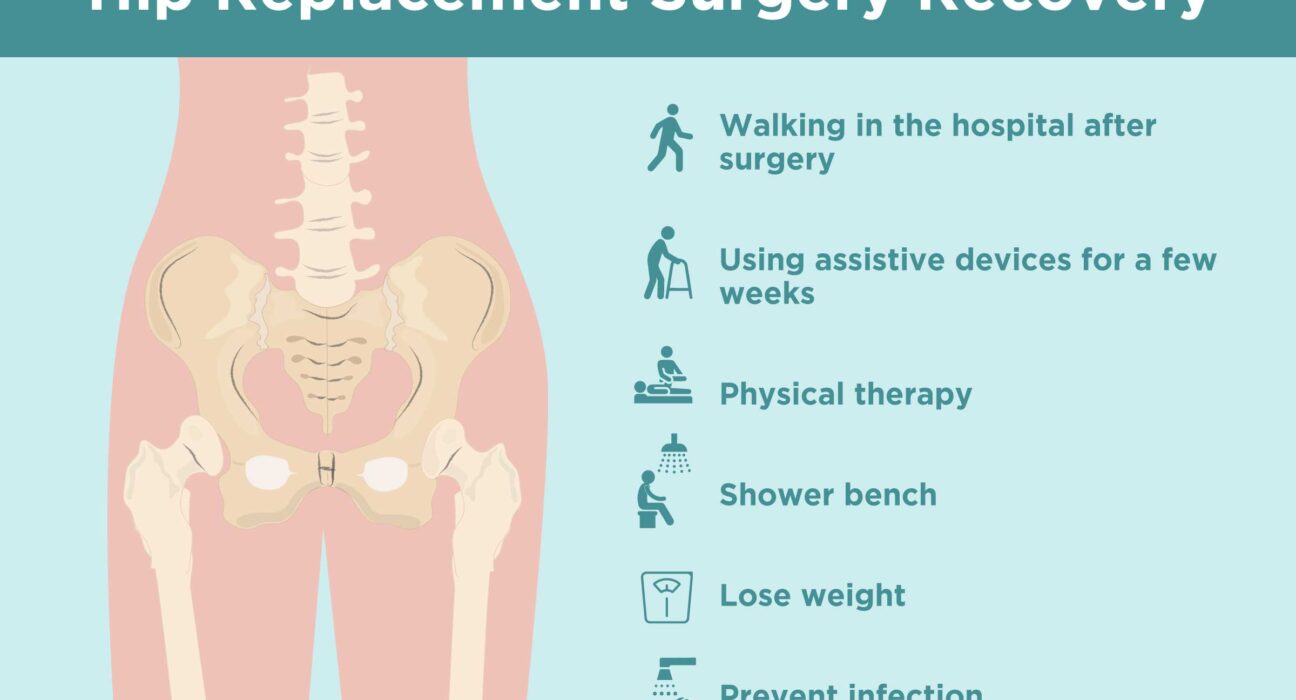Step-by-Step Guide to Hip Replacement Surgery: What to Expect
If you or a loved one has been advised to undergo hip replacement surgery, it’s completely normal to feel a mix of anxiety and curiosity. Knowing what to expect can ease concerns and help you feel more in control. Understanding the hip replacement surgery steps from initial preparation to post-surgery recovery can make the entire process less overwhelming.
This guide is designed to walk you through each stage clearly and simply, offering insight into how to prepare, what happens during the procedure, and how to manage recovery. Being informed can lead to a smoother experience and better outcomes for your hip health.
What Is Hip Replacement Surgery?
Hip replacement surgery is a proven procedure designed to relieve chronic pain and restore mobility by replacing a damaged hip joint with an artificial implant. It’s most often recommended for patients with advanced arthritis, serious injuries, or long-term wear-and-tear that make daily tasks difficult.
When pain becomes unmanageable and medications or physical therapy no longer help, surgery is often the best option to improve quality of life. Thanks to recent advances in medical technology, hip replacement surgery has become safer, less invasive, and more effective. Minimally invasive techniques and improved implant designs allow for smaller incisions, less blood loss, and quicker recovery.
Many patients begin walking with support shortly after surgery and return to daily routines within weeks. With proper care, physical therapy, and lifestyle changes, results can be long-lasting, restoring a pain-free, active, and independent life.
Step 1: Pre-Surgery Preparation
Preparation is the foundation of successful surgery. Your doctor will conduct a complete evaluation, including blood tests, X-rays, and sometimes an ECG. You may be advised to:
- Stop certain medications like blood thinners.
- Quit smoking to promote healing.
- Maintain a healthy weight for better recovery.
- Prepare your home, install grab bars, remove clutter, and arrange a comfortable resting area.
Taking these hip replacement surgery steps seriously before the procedure ensures smoother healing later.
Step 2: The Day of Surgery
On the surgery day, you’ll be admitted to the hospital, given pre-op instructions, and meet your surgical team. An anesthesiologist will explain whether you’ll receive general anesthesia (asleep) or spinal anesthesia (numb from the waist down). This preparation helps reduce anxiety and ensures you know what’s happening.
Step 3: The Surgical Procedure
The operation itself typically lasts two to three hours. Here’s a simple breakdown of what happens:
- The surgeon makes an incision to access the hip joint.
- Damaged bone and cartilage are carefully removed.
- An artificial prosthetic joint is placed to restore movement.
Depending on your condition, doctors may perform a total hip replacement or a partial one. With advances in surgical techniques, many patients experience less pain and faster recovery compared to older methods.
Step 4: Immediately After Surgery
Once the surgery is over, you’ll spend some time in a recovery room. Doctors and nurses will monitor your vital signs while managing your pain. As the anesthesia wears off, a physiotherapist may help you take your first assisted steps. This early movement is a crucial part of the hip replacement surgery steps, as it reduces the risk of complications like blood clots.
Step 5: Hospital Stay & Early Recovery
Most patients stay in the hospital for two to five days. During this time, you’ll:
- Learn how to walk with crutches or a walker.
- Begin gentle exercises to improve mobility.
- Get instructions on wound care and medications.
The goal is to make you independent enough to continue recovery at home.
Step 6: At-Home Recovery
Recovery at home requires discipline and patience. You’ll need to:
- Manage pain with prescribed medicines.
- Continue light physiotherapy exercises.
- Use mobility aids until your hip is strong enough.
- Follow a protein-rich diet to support healing.
Avoid bending too much, crossing your legs, or lifting heavy objects in the first few weeks.
Step 7: Long-Term Rehabilitation
Healing doesn’t stop once you return home; it’s a journey. In the coming months, you’ll notice steady progress:
- 2 weeks: Reduced pain and better mobility.
- 6 weeks: Ability to walk longer distances with minimal support.
- 3 months: Return to many daily activities.
- 6 months and beyond: Resuming low-impact activities like swimming, cycling, and yoga.
Most hip implants last 15–20 years, giving patients a new lease on life with improved mobility and less pain.
Life After Hip Replacement
The greatest reward of completing all the steps of hip replacement surgery is regaining your quality of life. Many patients describe the change as life-changing it not only relieves pain but restores mobility, confidence, and independence in everyday activities. With reduced stiffness and improved movement, simple tasks feel easier, and restful sleep returns.
This comfort boosts energy, mood, and overall health. After surgery, patients often enjoy activities such as walking, swimming, cycling, and light sports without discomfort. While high-impact activities should be avoided, the ability to travel, stay active, and enjoy time with loved ones makes the entire hip replacement journey truly worthwhile.
Conclusion
Going through hip replacement surgery can feel overwhelming, but when you clearly understand the hip replacement surgery steps, the journey becomes more manageable and less intimidating. From preparation and surgery to rehabilitation and long-term recovery, every stage plays a vital role in helping patients regain mobility, reduce pain, and enjoy a better quality of life.
For those in Nagpur, Dr. Shekhar Hospital offers the perfect blend of experience, advanced technology, and patient-centered care. With Dr. Laghvendu Shekhar expertise and the hospital’s high success rate, patients can be confident of achieving safe and lasting results.





